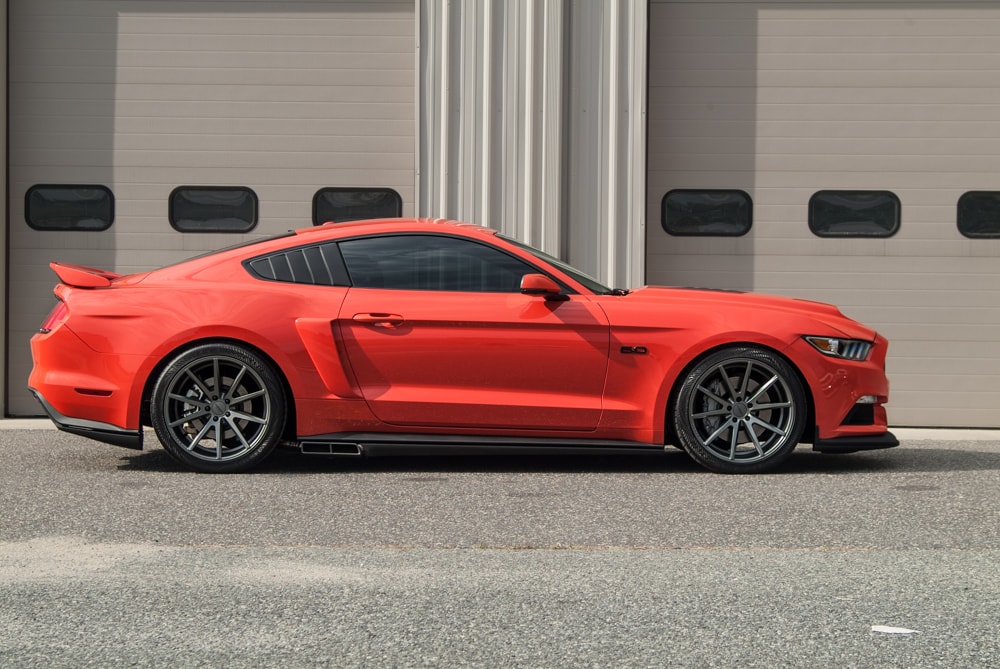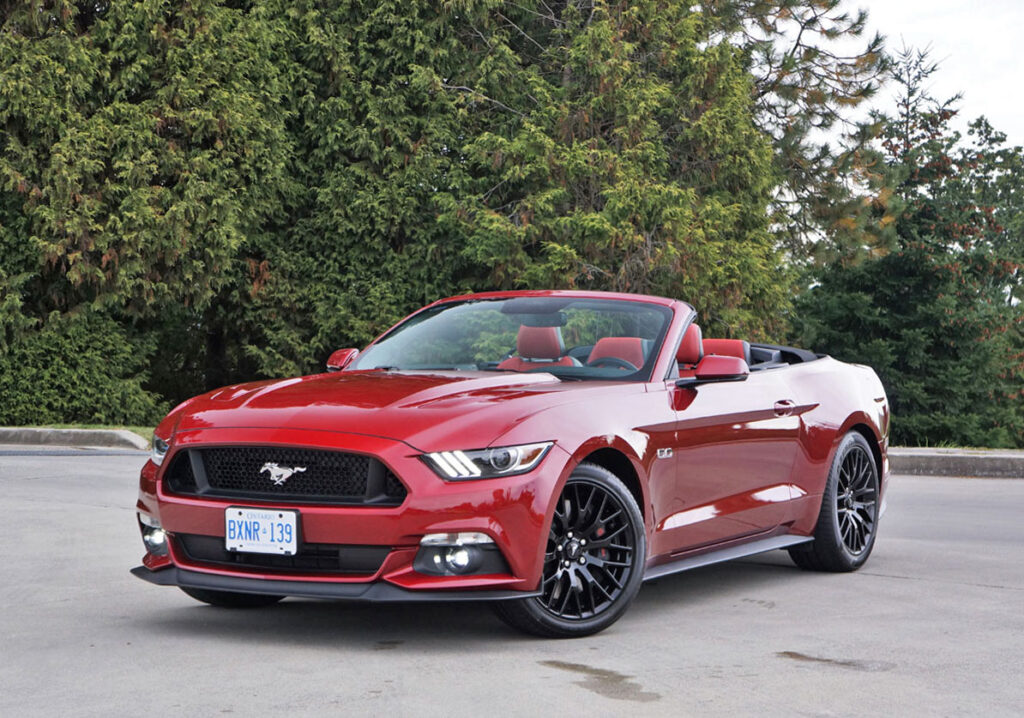Weight of the 2017 Mustang GT varies depending on the model, with the fastback coupe weighing approximately 3,705 lbs (1,680 kg) and the convertible around 3,825 lbs (1,735 kg). The weight is influenced by factors like the 5.0L V8 engine, transmission choice, and body style, which affect performance and handling characteristics.
The 2017 Ford Mustang GT is a powerful and iconic vehicle that blends muscle car performance with modern engineering. One of the critical aspects that influence its overall performance and handling is its weight. The Mustang GT’s weight not only affects its acceleration and fuel efficiency but also its handling, ride quality, and overall driving experience. Whether you’re an enthusiast or considering purchasing this car, understanding its weight will help you make informed decisions about its capabilities and performance.
In this in-depth guide, we will discuss about the weight of the 2017 Mustang GT. From its curb weight to the factors that contribute to its overall mass, we will break down how its weight influences the car’s performance and how it compares to other vehicles in its class.

Contents
What Is the Curb Weight of 2017 Mustang GT?
The curb weight of a vehicle refers to its weight when it is fully equipped with all standard equipment, fluids, and a full tank of fuel, but without any passengers or cargo. It is one of the most important metrics when evaluating a car’s overall performance and efficiency. For the 2017 Ford Mustang GT, the curb weight varies depending on the model type (fastback or convertible) and the specific configuration.
- Mustang GT Fastback (Coupe): The curb weight for the fastback model is approximately 3,705 lbs (1,680 kg). This version comes with the standard V8 engine and a 6-speed manual transmission.
- Mustang GT Convertible: Due to the structural reinforcements needed for the convertible body, the curb weight is slightly higher at about 3,825 lbs (1,735 kg). This version retains the 5.0L V8 engine but adds weight from the convertible mechanism and extra reinforcements.
While these weights are averages for the base models, the curb weight can increase if the vehicle is equipped with optional features such as upgraded wheels, advanced technology, or additional safety equipment.
Factors Influencing the Weight of the Mustang GT
Several factors contribute to the overall weight of the 2017 Mustang GT. Understanding these elements can help explain how the weight impacts the car’s overall performance, handling, and fuel efficiency.
1. Engine Size and Configuration
The 2017 Mustang GT comes equipped with a 5.0-liter V8 engine, which is a key contributor to the vehicle’s overall weight. V8 engines are typically heavier than smaller engines due to their increased displacement and the number of components involved. This engine is designed for high performance, producing 435 horsepower and 400 lb-ft of torque, making it heavier but also more powerful.
- Impact on Weight: The engine’s larger size and power output add significant mass to the vehicle, which must be managed for handling and performance.
2. Transmission Type
The Mustang GT offers two transmission options: a 6-speed manual transmission and a 6-speed automatic transmission. The automatic transmission is typically heavier due to the additional components required for shifting, cooling, and managing the powertrain electronically.
- Impact on Weight: If you choose the automatic transmission, your vehicle will weigh a little more due to the additional weight of the transmission system.
3. Body Style
The 2017 Mustang GT is available in two primary body styles: the fastback coupe and the convertible. Convertibles are generally heavier because they require extra reinforcements to compensate for the lack of a fixed roof structure. These reinforcements add weight but are necessary for structural integrity.
- Impact on Weight: The convertible model is typically around 120 lbs heavier than the fastback due to the added structural elements and the convertible roof mechanism.
4. Optional Features and Upgrades
Additional equipment and features also play a significant role in the overall weight of the Mustang GT. Upgrades like premium audio systems, larger wheels, heated and cooled seats, advanced safety features, and enhanced suspension systems can add weight to the car.
- Impact on Weight: When selecting additional features, it’s important to consider how they will impact the vehicle’s weight. For example, larger wheels and more advanced suspension systems can make the vehicle heavier and may affect fuel efficiency.

How Does the Mustang GT’s Weight Affect Its Performance?
The weight of a car has a significant impact on its performance, handling, and overall driving experience. The 2017 Mustang GT, with its V8 engine and heavier curb weight, manages its performance with impressive efficiency, but understanding how weight affects the driving dynamics is crucial.
1. Acceleration and Top Speed
Heavier vehicles typically require more power to achieve the same acceleration as lighter cars. While the Mustang GT‘s 5.0L V8 engine provides ample power, its weight can influence its 0-60 mph times and overall acceleration. However, due to the powerful engine, the Mustang GT still manages to go from 0 to 60 mph in approximately 4.3 seconds, which is impressive for its class.
- Impact on Performance: Despite its weight, the Mustang GT’s engine power and optimized drivetrain allow it to maintain exceptional acceleration times, outpacing many of its competitors in terms of performance.
2. Handling and Cornering
The Mustang GT’s increased weight can influence how the vehicle handles tight corners and high-speed turns. Heavier cars typically have more momentum, which can make them more challenging to handle in quick, sharp turns. However, Ford has equipped the Mustang GT with a well-tuned suspension system that manages its weight effectively, allowing for good handling and a comfortable ride even at high speeds.
- Impact on Handling: While the Mustang GT is heavier compared to some sports cars, its suspension and chassis work well together to deliver an enjoyable driving experience.
3. Fuel Efficiency
In general, heavier vehicles tend to consume more fuel because they require more energy to move. The 2017 Mustang GT has a combined city/highway fuel efficiency rating of around 20 mpg, which is average for a performance-oriented vehicle. It’s important to note that fuel efficiency can be impacted by the weight of the car, but the Mustang GT’s engine efficiency helps offset this.
- Impact on Fuel Efficiency: While the weight of the car slightly impacts fuel economy, the powerful engine helps maintain reasonable fuel efficiency for a performance vehicle.
Comparing the Mustang GT’s Weight to Other Vehicles
To better understand the Mustang GT’s weight in context, it’s useful to compare it with other vehicles in the same performance class. Here’s a quick comparison with some of its competitors:
- Chevrolet Camaro SS (2017): Approximately 3,685 lbs (1,670 kg). This vehicle is similar in weight to the Mustang GT, though it has a slightly smaller engine size.
- Dodge Challenger R/T (2017): Approximately 3,900 lbs (1,770 kg). The Challenger R/T is heavier than the Mustang GT, which could affect its handling and fuel efficiency.
- BMW M4 (2017): Approximately 3,500 lbs (1,590 kg). The M4 is lighter than the Mustang GT but comes with a turbocharged 6-cylinder engine rather than a V8.
As seen, the Mustang GT falls in the middle of its class in terms of weight, balancing performance and handling with the power needed to drive it.
Frequently Asked Questions
Here are some FAQs about the weight of the 2017 Mustang GT –
1. What is the curb weight of the 2017 Mustang GT?
The 2017 Mustang GT has a curb weight of approximately 3,705 lbs (1,680 kg) for the fastback coupe and 3,825 lbs (1,735 kg) for the convertible.
2. Does the weight of the Mustang GT affect its acceleration?
Yes, the weight of the Mustang GT does affect its acceleration. However, its 5.0L V8 engine provides enough power to maintain impressive acceleration times despite the additional weight.
3. How does the Mustang GT’s weight compare to other muscle cars?
The Mustang GT‘s weight is comparable to other muscle cars in its class, such as the Chevrolet Camaro SS and Dodge Challenger R/T, though each vehicle’s weight can affect handling and fuel efficiency differently.
4. Does the transmission choice impact the vehicle’s weight?
Yes, the automatic transmission is typically heavier than the manual transmission due to additional components required for power delivery and shifting.
5. Can modifications affect the weight of the Mustang GT?
Yes, aftermarket modifications, such as larger wheels, upgraded exhaust systems, and added features, can increase the Mustang GT’s weight and potentially affect its performance and fuel efficiency.
Conclusion
The weight of the 2017 Mustang GT plays a crucial role in its overall performance, handling, and fuel efficiency. Understanding the various factors that contribute to its weight, such as engine size, transmission choice, and body style, can help you better appreciate the Mustang GT’s capabilities. While the vehicle’s weight affects its acceleration and handling, Ford has engineered the Mustang GT to strike a balance between power and performance, making it a standout in the muscle car segment.
Whether you’re looking to purchase a 2017 Mustang GT or simply curious about its specifications, knowing how its weight influences its performance will provide valuable insights into the driving experience it offers.




